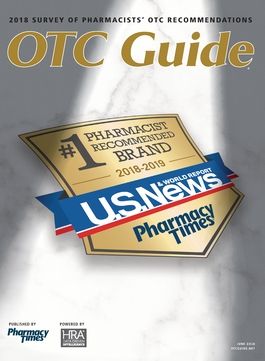General Pharmacist Pearls to Consider for Patients in Pain
It is no secret that the country is up in arms about the many risks from opioid intake. The prevalence of addiction, harm, and death associated with prescription opioid use among genuine pain patients versus the pervasiveness of illicit heroin and fentanyl derivates remain blurred by mainstream media and politicians. As a result, many patients suffering from legitimate pain are doomed to a purgatory of untreated agony because of a fear among prescribers and pharmacists to fill such prescriptions. Although the number of opioid prescriptions and overall doses have drastically declined over the last 6 years, for several years prior, patient selection for opioid therapy was likely inadequate.1,2
Some patients require opioids for short- or long-term analgesia. For those requiring short-term opioid therapy, it is important to recognize that acute postoperative pain could lead to a chronic pain syndrome due to neuroplasticity if the acute pain is inadequately treated.3 This often happens with include transurethral resection of prostate, lung resection, Caesarean section, and breast augmentation. In such cases, if a patient is fearful of taking their medication due to fear of addiction, the pharmacist should counsel on addiction, physical dependence, and tolerance; the risks of not treating pain appropriately; and the potential for inadequate healing. Also, consideration should be given to appropriate prophylactic OTC laxative therapy. And for patients on long-term opioid therapy who have unrelenting constipation, pharmacists are in unique position to advocate for the relatively new medication class, peripherally acting mu opioid receptor antagonists, such as methylnaltrexone (Relistor), naloxegol, and naldemedine.
Nonopioid considerations and various pearls are equally important. Nonsteroidal anti-inflammatory drugs (NSAIDs) are a common OTC option and probably the best option to treat connective tissue pain. Dental procedures and maxilla-facial surgeries are more likely to respond to NSAIDs compared with opioids. If bleeding is a risk and there are no contraindications, consider that etodolac is more cyclo-oxygenase (COX)-2 selective than celecoxib and meloxicam at 7.5 mg per day offers less bleeding risk compared with traditional NSAIDs.4
Consider, too, that patients are often counselled by their prescriber to stop NSAID therapy several days prior to any number of surgical procedures without consideration to half-life or relative COX selectivity. Aspirin, for example, is irreversibly bound within platelets, which prohibits clotting for the life of the platelet. NSAIDs, however, are reversibly bound and clotting activity is restored depending on drug half-life. A quick call to the prescriber or surgeon to discuss these parameters could allow continued analgesic therapy with NSAIDs prior to a procedure and go a long way to helping patients.4
Finally, as patients scramble for various alternatives to treat chronic pain syndromes, we are seeing more widespread use of natural products, such as kratom, cannabinoids, Saint John’s Wort, and others. Pharmacists should familiarize themselves with the potential toxicities of such products, particularly the risk for drug interactions.5 Kratom blocks reuptake of norepinephrine, dopamine, and serotonin at low doses, but is a partial opioid agonist at elevated doses; cannabinoids are generally central nervous system stimulants but also have sedating properties; synthetic illicit cannabinoids are associated with hallucinations and paranoia; and Saint John’s Wort has significant serotonin reuptake inhibition and induces cytochrome P450 3A4 enzymes,6 which is the most prevalent enzyme system responsible for metabolism of prescribed medications, the result of which could be reduced blood levels of necessary maintenance medications.
Jeffrey Fudin, PharmD, DAIPM, FCCP, FASHP, FFSMB, is chief executive officer and chief medical officer of Remitigate, LLC. He is also an adjunct associate professor at Western New England University College of Pharmacy in Springfield, Massachusetts, and an adjunct associate professor of pharmacy practice and pain management at Albany College of Pharmacy and Health Sciences in New York.
References
1. Rudd RA, Seth P, David F, Scholl L. Increases in drug and opioid-involved overdose deaths—United States, 2010-2015. MMWR Morb Mortal Wkly Rep.2016;65(5051):1445-1452. doi: 10.15585/mmwr.mm655051e1.
2. Macmadu A, Carroll JJ, Hadland SE, Green TC, Marshall BD. Prevalence and correlates of fentanyl-contaminated heroin exposure among young adults who use prescription opioids non-medically. Addic Behav.2017;68:35-38. doi: 10.1016/j.addbeh.2017.01.014.
3. Melzack R, Coderre TJ, Katz J, Vaccarino AL. Central neuroplasticity and pathological pain. Ann N Y Acad Sci. 2001;933:157-174.
4. Younan M, Atkinson TJ, Fudin J. A practical approach to discontinuing NSAID therapy prior to a procedure. Prac Pain Manag.2013;13(10):45-51. practicalpainmanagement.com/treatments/pharmacological/non-opioids/practical-approach-discontinuing-nsaid-therapy-prior. Published December 9, 2013. Accessed May 15, 2018. Atkinson TJ, Fudin J. Interactions between pain medications and illicit street drugs. Prac Pain Manag.2014;14(7):50-61. practicalpainmanagement.com/treatments/pharmacological/opioids/interactions-between-pain-medications-illicit-street-drugsPublished August 6, 2014. Accessed May 15, 2018.
5. Wang Z, Gorski JC, Hamman MA, Huang SM, Lesko LJ, Hall SD. The effects of St John's wort (Hypericum perforatum) on human cytochrome P450 activity. Clin Pharmacol Ther.2001;70(4):317-326.

